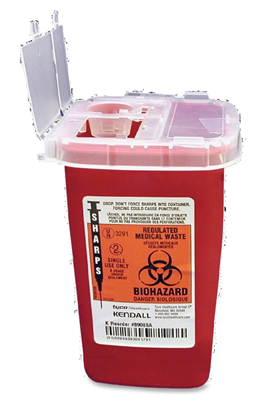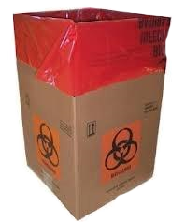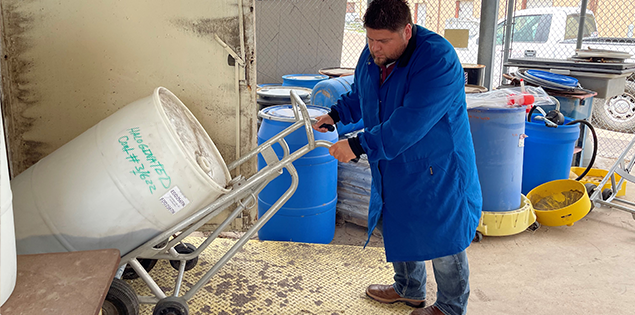Regulated Waste Releases
Regulated Waste is generated from a variety of processes and includes universal waste, chemical waste, biological waste and radioactive waste. All have strict regulations concerning their collection, treatment, storage and disposal. Regulated waste is strictly forbidden from being thrown into the regular trash or disposed of down the drain.
Universal Waste is a specific type of hazardous waste primarily generated from facilities related activities. It is subject to more relaxed standards (storage and disposal) than those traditional hazardous wastes but can still pose a threat to the environment if not disposed of correctly. It includes paint, waste paint, used paint thinner, fluorescent lamps that contain mercury at levels above the hazardous threshold, mercury-containing equipment (thermostats, barometers, monometers), batteries, and certain pesticides.
Hazardous Waste is potentially threatening to human health and the environment and displays one or more of four hazardous characteristics:
- Ignitability: easily flammable (ex. solvents)
- Reactivity: capable of rapid chemical reaction (ex. peroxides)
- Corrosivity: highly acidic or alkaline, able to dissolve metals or burn the skin
(ex. Hydrochloric acid, sodium hydroxide) - Toxicity: capable of releasing toxic constituents into the environment (ex. lead-based paint)
Rule of Storage for Hazardous Waste Streams:
- Must not remain in storage for more than one semester.
- Labeled with a description of the contents and the words “Hazardous Waste”.
- Containers are kept closed when not in use.
- Stored in secondary containment.
- Kept in good condition, handled carefully, and replaced if there are signs they may fail.
- Removed from the laboratory within 72 hours of being filled.
 Medical or Biological Waste is routinely generated from both Research and Clinical settings at UTRGV. Medical waste in the State of Texas is also termed” Special Waste from Health Care Related Facilities” and is defined under 25 TAC 1.132(44) as the following:
Medical or Biological Waste is routinely generated from both Research and Clinical settings at UTRGV. Medical waste in the State of Texas is also termed” Special Waste from Health Care Related Facilities” and is defined under 25 TAC 1.132(44) as the following:
- Waste from animals that have been intentionally exposed to pathogens.
- Bulk blood, bulk human-blood products, and bulk human bodily fluids.
- Sharps (regardless of whether it has come into contact with blood).
- Pathological waste.
- Microbiological waste.
All biological waste generated at the University is placed in biohazardous waste containers (“red bags”) for disposal to an offsite contractor. Waste is then incinerated or chlorine macerated and disposed into an approved sanitary landfill.
Radioactive Waste is any waste generated from research involving radioactive materials and is strictly regulated and mandated to be disposed of through EHSRM. This includes all forms of radioactive waste including liquid, solid, animal carcasses and associated waste, and scintillation vials. Because of the cost associated with both the disposal and storage of radioactive waste, it is recommended that all researchers meet with the Radiation Safety Officer prior to conducting any activities to ensure that the minimum amount of activity is used in research studies.
 Disposal
Disposal
EHSRM is available to help characterize waste streams and provide for their disposal free of charge. All items associated with the disposal of waste are provided free of charge including containers for the disposal of all waste streams (sharps containers, biohazard bags and boxes, secondary containment, radioactive waste containers, and broken glass containers).
All waste is collected on Mondays, Wednesdays and Fridays. You can request a waste pick-up by emailing waste@utrgv.edu.


